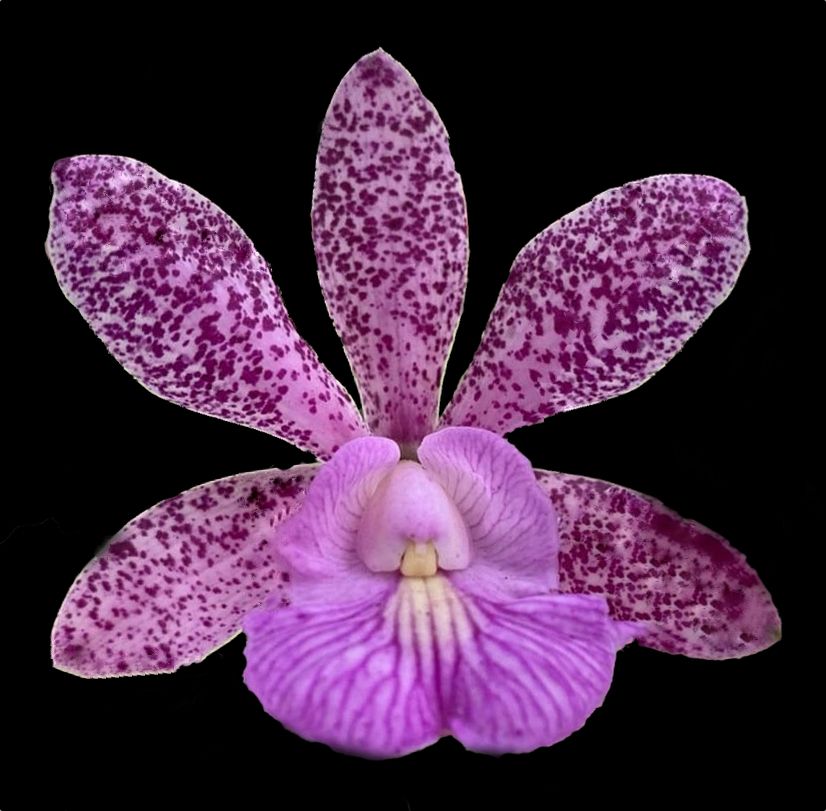Description
In orchids, a primary hybrid is one made from crossing two species together. If you’re fuzzy on the difference between species and hybrids: a species is a type of orchid (or any living organism), that occurs in nature, whereas a hybrid is what you get when you cross different species or hybrids together.) Cattleya Magairlin is a primary hybrid that results from crossing Catt. nobilior and Catt. aclandiae, and its blooms tend toward purple colors, and sometimes have spots! The spots derive from the patterning of the aclandiae parent, and produce a very attractive look not commonly seen in Cattleya breeding.
Another surprising fact about Catt. Magairlin is that was only officially registered as a hybrid in 2018, as growers have been breeding Cattleyas for 200 years, and both nobilior and aclandiae were well known to Victorian-era breeders.
For growers whose tastes run towards species rather than hybrids of complex genetic backgrounds, making a primary hybrid is always a cool accomplishment, but much of the low-hanging fruit (i.e., the popular species in the popular genera) has already been done. So it’s surprising to learn that Catt. Magairlin was only officially registered as a hybrid in 2018, as orchid growers have been breeding Cattleyas for 200 years, and both nobilior and aclandiae were well known to Victorian-era orchid growers. So for those looking to create a novel primary hybrid, you might be surprised at what is still possible.
One well-known effect of breeding between two related species (or different varieties of the same species) is hybrid vigor. This effect, called heterosis, has been known since people started breeding plants for crops thousands of years ago, and results in progeny plants that tend to have more robust traits than the parents. Our current crop of Catt. Magairlin seems to have great hybrid vigor as they certainly grow very robustly! Since these plants were grown from seed, they will all be genetically distinct (rather than identical clones). We’re hoping for beautiful violet-colored blooms with lots of spots (big, small, or fine — they’re all good)!






